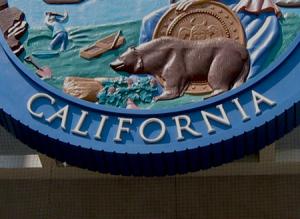Rate Case Roundup: California

In a pair of rate orders issued the same day for two small local exchange telephone carriers, the California Public Utilities Commission determined that, pursuant to the terms of proposed settlements filed by the companies, both carriers should be permitted to increase the recurring basic charge for residential subscribers from $20.25 to $25 per month.
The one carrier, Ponderosa Telephone Company, had asked for a $13.99 million annual revenue requirement, which actually represented a decrease from its last authorized revenue level of $15.4 million. Despite the requested reduction, however, Ponderosa suggested that it be allowed to draw a greater amount from the California High-Cost Fund (CHCF), which provides subsidies to telephone carriers that operate in rural and less densely populated areas, where the cost of service is proportionately higher. Under the company’s plan, it would receive $5.49 million from the CHCF rather than its presently approved draw of $3.79 million.
Under the rate design proffered by Ponderosa, the base charge for residential service would go from $20.25 to $23 a month, with the business charge rising to $34.15 per month. After entering into settlement negotiations, though, Ponderosa agreed to higher monthly charges for both residential and business customers but a lower subsidy from the CHCF.
As stipulated to by the parties, the residential charge would be set at $25 per month and the business charge at $37.10 a month, but the CHCF monies would decrease to only $3.6 million on an annual basis. The terms in the settlement state that such changes translated into an annual revenue requirement of just $10.93 million a year, a sharp drop from the prior level of $15.4 million.
In adopting the proposed rate agreement, the commission noted that it had the support of all parties. The commission admitted, though, that it could not readily divine the underlying reasoning for the numbers delineated therein, as the settlement had been filed as a “black box” agreement that provided little information on how the parties arrived at their final calculations.
Nevertheless, the commission said it was satisfied that the approved rates, charges, and revenue levels were in keeping with the overall rate of return of 8.44% that had been established for the company in December of 2016. Re Ponderosa Telephone Co., Decision 17-11-013, Application 16-10-001, Nov. 30, 2017 (Cal.P.U.C.).
In the other telephone carrier case, involving Sierra Telephone Company, the commission held that a similar black box settlement was acceptable. It related that the stipulation provides for an overall revenue requirement of $23.575 million for the company for test year 2018, based in part on raising the monthly residential customer charge to $25, increasing the business customer charge from $31.85 to $39.32 per month, and drawing $12.97 million from the CHCF on an annual basis.
Unlike the Ponderosa case, though, the commission observed that Sierra had both applied for and been granted increases in its authorized revenues and CHCF subsidy. The commission deemed the different results appropriate given the differences in the two companies’ operating characteristics.
The commission remarked that part of the rationale for a greater revenue requirement for Sierra could be traced to the higher overall rate of return it had been awarded in the December 2016 proceeding. The commission stated that the 9.22% return approved for Sierra accounted in part for the increase in its revenue requirement. Re Sierra Telephone Co., Decision 17-11-016, Application 16- 10-003, Nov. 30, 2017 (Cal.P.U.C.).



